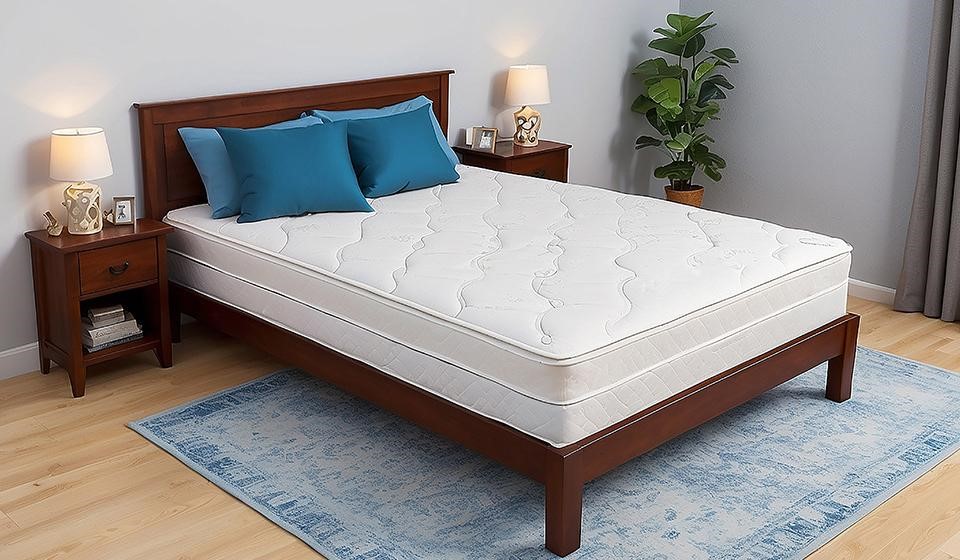
Understand Your Sleep Position and Its Implications
The right mattress firmness is primarily dependent on your preferred sleeping position. Most people sleep on their sides, so an area of the mattress that lets their hips and shoulders sink in to keep their spines aligned is usually beneficial.
Conversely, those who like to sleep prone or supine usually benefit from firmer mattresses since they help avoid excessive compression, which can cause back pain. It’s crucial to consider each person’s preferred posture when sharing a large, king-sized bed. Choose a split king mattress or a model with two comfort zones to satisfy your partner’s needs and maintain your sleeping preferences.
Assess Your Body Type and Weight
The way a mattress feels and functions is greatly influenced by your body weight. While people with heavier builds may sink deeper into softer alternatives, reducing support, lighter people may find firm mattresses uncomfortable and inflexible.
Generally, people who weigh less than 130 pounds (under 130 pounds) tend to like softer mattresses. In contrast, people between 130 and 230 pounds (average weight) tend to feel that moderately to medium-firm mattresses are the most comfortable. Firmer options usually benefit heavier people (above 230 pounds) to ensure proper support.
When choosing a king-size bed, remember that a greater surface area could necessitate increased structural support to provide even comfort throughout the sleeping surface, particularly for more prominent people or couples.
Explore Mattress Materials and Construction
A mattress’s capability to relieve annoyance and last a long time is greatly affected by the materials that go into making it. Although some sleepers find memory foam to retain heat, it relieves pressure points and isolates motion. Latex provides a durable, resilient bounce that is good at cooling.
Though some sleepers may find that innerspring mattresses don’t relieve pressure points, they offer great support and ventilation. A balance of attributes is provided by hybrid mattresses, which blend the luxurious feel of latex or foam with the support of springs within them.
Hybrid mattresses have a greater surface area and the comfort layers required for pressure relief and are frequently excellent choices for people considering getting a king-size bed. Knowing the unique aspects of each material can help you choose sensibly for pain-free sleep by considering your requirements and preferences.
Consider Temperature Regulation
Sweating, restless evenings might result from a heat-trapping mattress. Larger layers can increase heat retention, so keep that in mind when choosing a king-size mattress. When selecting a mattress, prefer those with permeable constructions, open exteriors, or cooling-gel components; these features improve airflow and heat dispersion.
Mattresses made of rubber, known for their excellent air permeability and natural capacity to regulate temperature, might be a comfort for hot sleepers. It is critical to ensure your sleeping surface keeps a cosy thermal balance during the night to promote peaceful, pain-free sleep.
Check for Proper Edge Support
Edge support is an often overlooked factor that can significantly impact your sleep quality and the longevity of your mattress. Firm edge support allows you to utilise the entire mattress surface without feeling like you might roll off. This is particularly important for king-size beds, where couples may find themselves sleeping closer to the edges.
Good edge support also makes it easier to sit on the edge of the bed, which can benefit those with mobility issues or chronic pain. When testing mattresses, sit and lie near the edges to assess their stability and support.
Conclusion: Invest Time in Your Decision
Purchasing the ideal mattress is a very personal choice that needs to take your particular demands and tastes into grave account. Utilise the trial periods many mattress producers offer to ensure your decision will result in many years of pain-free sleep. Acquiring a king-size mattress is essential to your overall wellness, so proceed cautiously.
Comments
comments